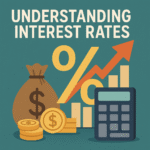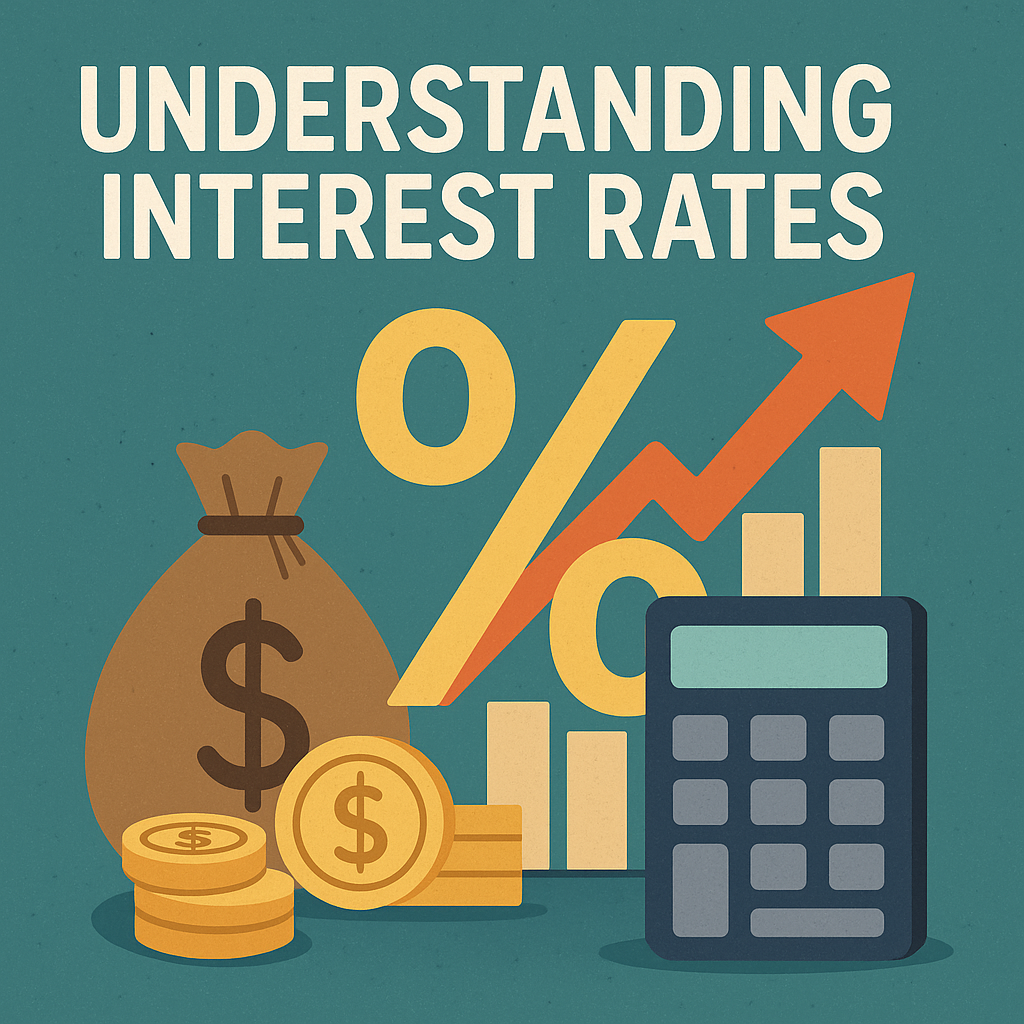The Backbone of Loans and General Finance

Interest rates play a pivotal role in the world of finance, influencing everything from personal loans to national economies. Whether you’re applying for a mortgage, using a credit card, or simply saving money in a bank account, the concept of interest is always at play. It serves as the cost of borrowing money or the reward for saving it. Despite its ubiquity, many people are unaware of how interest rates are calculated, what they signify, and how they affect their financial decisions. Gaining a better understanding of this financial metric can empower consumers, investors, and businesses alike.
What Exactly Is an Interest Rate?
An interest rate is the percentage charged on the total amount borrowed or earned on savings over a period of time. In the context of loans, it represents the cost of using someone else’s money, usually expressed annually. When you borrow from a bank or a financial institution, you’re essentially paying a fee for the privilege of accessing funds you don’t currently have. Conversely, when you save or invest, you earn interest as a return on the capital you’ve put aside. This duality makes interest rates common to both borrowing and saving, serving as a crucial bridge between loans and general financial activity.
The Role of Interest Rates in Loans
In lending, interest rates determine how much a borrower must repay over and above the principal amount. The higher the rate, the more expensive the loan becomes. Banks and lenders assess various factors before assigning an interest rate to a borrower, including credit scores, income levels, and prevailing market rates. Fixed interest rates remain the same throughout the term of the loan, offering predictability. On the other hand, variable rates fluctuate based on broader economic conditions, which can either benefit or burden the borrower depending on the market’s direction. Understanding these types helps individuals make informed decisions when selecting financial products.
Interest Rates in Everyday Financial Decisions
From student loans to auto financing and even credit card balances, interest rates are embedded in many everyday financial decisions. A small difference in interest rates can lead to significant changes in the total amount repaid over time. For instance, a car loan with a 6% interest rate compared to one with 4% can translate to hundreds or even thousands of dollars in extra costs. This is why consumers are urged to shop around, compare rates, and read the fine print. Financial literacy in this area isn’t just beneficial—it’s essential for smart money management.
Interest Rates and General Financial Health
Beyond individual borrowing, interest rates impact the broader economy. Central banks, such as the Federal Reserve or the Reserve Bank of India, manipulate benchmark interest rates to control inflation and stimulate or cool down the economy. When interest rates are low, borrowing becomes cheaper, encouraging spending and investment. This often leads to economic growth. Conversely, high interest rates discourage borrowing but help rein in inflation. This macro-level influence underscores how interest rates are more than just numbers on a loan agreement—they’re vital tools of economic policy and health.
The Connection Between Inflation and Interest Rates
Inflation and interest rates are closely linked in economic theory and practice. When inflation rises, central banks typically raise interest rates to make borrowing more expensive and reduce spending, which can help cool off an overheated economy. Conversely, during periods of low inflation or deflation, lowering interest rates encourages borrowing and investment, thereby injecting vitality into the financial system. For the average consumer, understanding this relationship helps anticipate shifts in loan and savings rates, giving them a strategic advantage in managing their finances.
How Interest Rates Affect Savings and Investments
While interest is commonly associated with loans, it also significantly influences savings and investment returns. Savings accounts, certificates of deposit, and government bonds all yield returns based on prevailing interest rates. Higher rates reward savers and fixed-income investors with better returns, making them more attractive during times of economic uncertainty. For long-term investors, interest rate trends can impact the performance of stocks and real estate as well, altering portfolio strategies. Whether you’re conservative or growth-focused, the interest rate environment is a factor you cannot ignore.
Digital Tools and Smart Monitoring of Interest Rates
In today’s tech-driven world, consumers have more power than ever to monitor interest rates and act accordingly. Online platforms, mobile apps, and comparison websites provide real-time updates, helping users make educated decisions on loans, credit cards, and investment products. AI-powered tools can even predict rate movements based on economic data and historical patterns. These resources empower individuals and businesses to time their borrowing or investing activities for maximum benefit. Being proactive in tracking interest rate trends can lead to significant financial advantages over time.
Navigating High and Low Interest Rate Environments
Both high and low interest rate environments present unique challenges and opportunities. When rates are high, it might be wise to prioritize paying off debt quickly or consolidating loans to reduce interest costs. Conversely, during low-rate periods, it might make sense to lock in long-term loans or refinance existing debts to save money. Similarly, low rates can be ideal for investing in equities or real estate, while high rates may prompt a shift toward fixed-income products. Tailoring your financial strategy to current rate conditions is a smart way to optimize outcomes.
Conclusion: Interest Rates as a Financial Compass
Interest rates are more than just figures calculated by banks or dictated by economic authorities—they are a financial compass that guides personal and institutional decision-making. They affect what you pay on your loans, what you earn on your savings, and how the economy grows or contracts. Whether you’re borrowing to buy a home, saving for retirement, or managing business finances, interest rates touch every aspect of your financial journey. By understanding their nuances and keeping an eye on the market, you can turn interest rates from a mystery into a tool that works in your favor.










